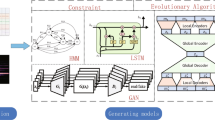Abstract
This paper presents a parallel system for searching a digital score of classical music in a personal library. The application scenario of the system is for a musician who wants to search for a specific score in its own device by playing an excerpt of a few seconds of the composition. We propose a solution, based on audio-to-score alignment, which allows to identify the correct score in a database of musical pieces in real time. This is a challenging task because we focus on a real-time system targeted for handheld devices characterized by both mobility and low power consumption. Experimental results show that it is possible to achieve real-time execution in the tested scenarios using parallel computing techniques with ARM processors.




Similar content being viewed by others
References
Alonso P, Cortina R, Rodríguez-Serrano FJ, Vera-Candeas P, Alonso-González M, Ranilla J (2017) Parallel online time warping for real-time audio-to-score alignment in multi-core systems. J Supercomput 73(1):126–138. https://doi.org/10.1007/s11227-016-1647-5
Alonso P, Vera-Candeas P, Cortina R, Ranilla J (2017) An efficient musical accompaniment parallel system for mobile devices. J Supercomput 73(1):343–353. https://doi.org/10.1007/s11227-016-1865-x
Arzt A (2016) Flexible and robust music tracking. Ph.D. thesis, Johannes Kepler University Linz
Carabias-Orti JJ, Cobos M, Vera-Candeas P, Rodríguez-Serrano FJ (2013) Nonnegative signal factorization with learnt instrument models for sound source separation in close-microphone recordings. EURASIP J Adv Signal Process 1:184. https://doi.org/10.1186/1687-6180-2013-184
Carabias-Orti J.J, Rodriguez-Serrano F, Vera-Candeas P, Ruiz-Reyes N, Canadas-Quesada F.J (2015) An audio to score alignment framework using spectral factorization and dynamic time warping. In: ISMIR: Proceedings of the International Conference of Music Information Retrieval, pp 742–748
Cichocki A, Amari SI (2010) Families of alpha- beta- and gamma- divergences: flexible and robust measures of Similarities. Entropy. https://doi.org/10.3390/e12061532
Cont A (2006) Realtime audio to score alignment for polyphonic music instruments, using sparse non-negative constraints and hierarchical HMMS. In: Proceedings of 2006 IEEE International Conference on Acoustics Speed and Signal Processing, vol 5. IEEE, pp V–245–V–248. https://doi.org/10.1109/ICASSP.2006.1661258
Dixon S (2005) Live tracking of musical performances using on-line time warping. In: DAFx, pp. 1727–1728
Ewert S, Muller M, Grosche P (2009) High resolution audio synchronization using chroma onset features. In: 2009 IEEE International Conference on Acoustics, Speech and Signal Processing. IEEE, pp 1869–1872. https://doi.org/10.1109/ICASSP.2009.4959972
Févotte C, Idier J (2011) Algorithms for nonnegative matrix factorization with the \(\beta\)-divergence. Neural Comput 23(9):2421–2456
Hu N, Dannenberg R.B, Tzanetakis G (2003) Polyphonic audio matching and alignment for music retrieval. In: IEEE workshop on applications of signal processing to audio and acoustics, vol 2003-Janua. IEEE, pp 185–188. https://doi.org/10.1109/ASPAA.2003.1285862
Kaprykowsky H, Rodet X (2006) Globally optimal short-time dynamic time warping, application to score to audio alignment. In: Proceedings of 2006 IEEE International Conference on Acoustics Speed and Signal Processing, vol 5. IEEE, pp V–249–V–252. https://doi.org/10.1109/ICASSP.2006.1661259
Kurth F, Muller M (2008) Efficient index-based audio matching. IEEE Trans Audio Speech Lang Process 16(2):382–395. https://doi.org/10.1109/TASL.2007.911552
Munoz-Montoro AJ, Carabias-Orti JJ, Vera-Candeas P, Canadas-Quesada FJ (2019) Online/offline score informed music signal decomposition: application to minus one. Eurasip J Audio Speech Music Process 1:23. https://doi.org/10.1186/s13636-019-0168-6
Orio N, Schwarz D (2001) Alignment of monophonic and polyphonic music to a score. In: Proceedings of the International Computer Music Conference, pp 155–158
Otsuka T, Takahashi T, Okuno H.G, Komatani K, Ogata T, Murata K, Nakadai K (2009) Incremental polyphonic audio to score alignment using beat tracking for singer robots. In: 2009 IEEE/RSJ International Conference on Intelligent Robots and Systems. IEEE, pp 2289–2296. https://doi.org/10.1109/IROS.2009.5354637
Raffel C, Ellis DPW (2015) Large-scale content-based matching of midi and audio files. In: Proceedings of the International Society for Music Information Retrieval Conference
Raffel C, Ellis DPW (2016) Extracting ground truth information from MIDI files: A Midifesto. In: Proceedings of 17th International Society for Music Information Retrieval Conference, pp 796–802
Raphael C (2010) Music plus one and machine learning. In: Proceedings of the 27th International Conference on Machine Learning, pp 21–28
Rodríguez-Serrano FJ, Carabias-Orti JJ, Vera-Candeas P, Canadas-Quesada FJ, Ruiz-Reyes N (2014) Monophonic constrained non-negative sparse coding using instrument models for audio separation and transcription of monophonic source-based polyphonic mixtures. Multimed Tools Appl 72(1):925–949. https://doi.org/10.1007/s11042-013-1398-8
Rodriguez-Serrano FJ, Duan Z, Vera-Candeas P, Pardo B, Carabias-Orti JJ (2015) Online score-informed source separation with adaptive instrument models. J New Music Res 44(2):83–96. https://doi.org/10.1080/09298215.2014.989174
Thickstun J, Harchaoui Z, Kakade S (2017) Learning features of music from scratch. In: ICLR, pp 1–14
Turetsky R, Ellis D (2003) Ground-truth transcriptions of real music from force-aligned MIDI syntheses. In: Proceedings of the 4th international symposium on music information retrieval, pp 135–141. https://doi.org/10.7916/D8S472CZ
Wang ALC (2003) An industrial strength audio search algorithm. In: Proceedings of the 4th International Society for Music Information Retrieval Conference (ISMIR 203), Baltimore, Maryland (USA), 26–30 October 2003, pp 7–13. https://doi.org/10.1109/IITAW.2009.110
Acknowledgements
This work has been supported by the Regional Ministry of the Principado de Asturias under grants FC-GRUPIN-IDI/2018/000226 and the University of Jaén under the program “Acción 1. Apoyo a las estructuras de investigación de la Universidad de Jaén para incrementar su competitividad atendiendo a sus singularidades.”
Author information
Authors and Affiliations
Corresponding author
Additional information
Publisher's Note
Springer Nature remains neutral with regard to jurisdictional claims in published maps and institutional affiliations.
Rights and permissions
About this article
Cite this article
Muñoz-Montoro, A.J., Cortina, R., García-Galán, S. et al. A score identification parallel system based on audio-to-score alignment. J Supercomput 76, 8830–8844 (2020). https://doi.org/10.1007/s11227-020-03185-2
Published:
Issue Date:
DOI: https://doi.org/10.1007/s11227-020-03185-2




